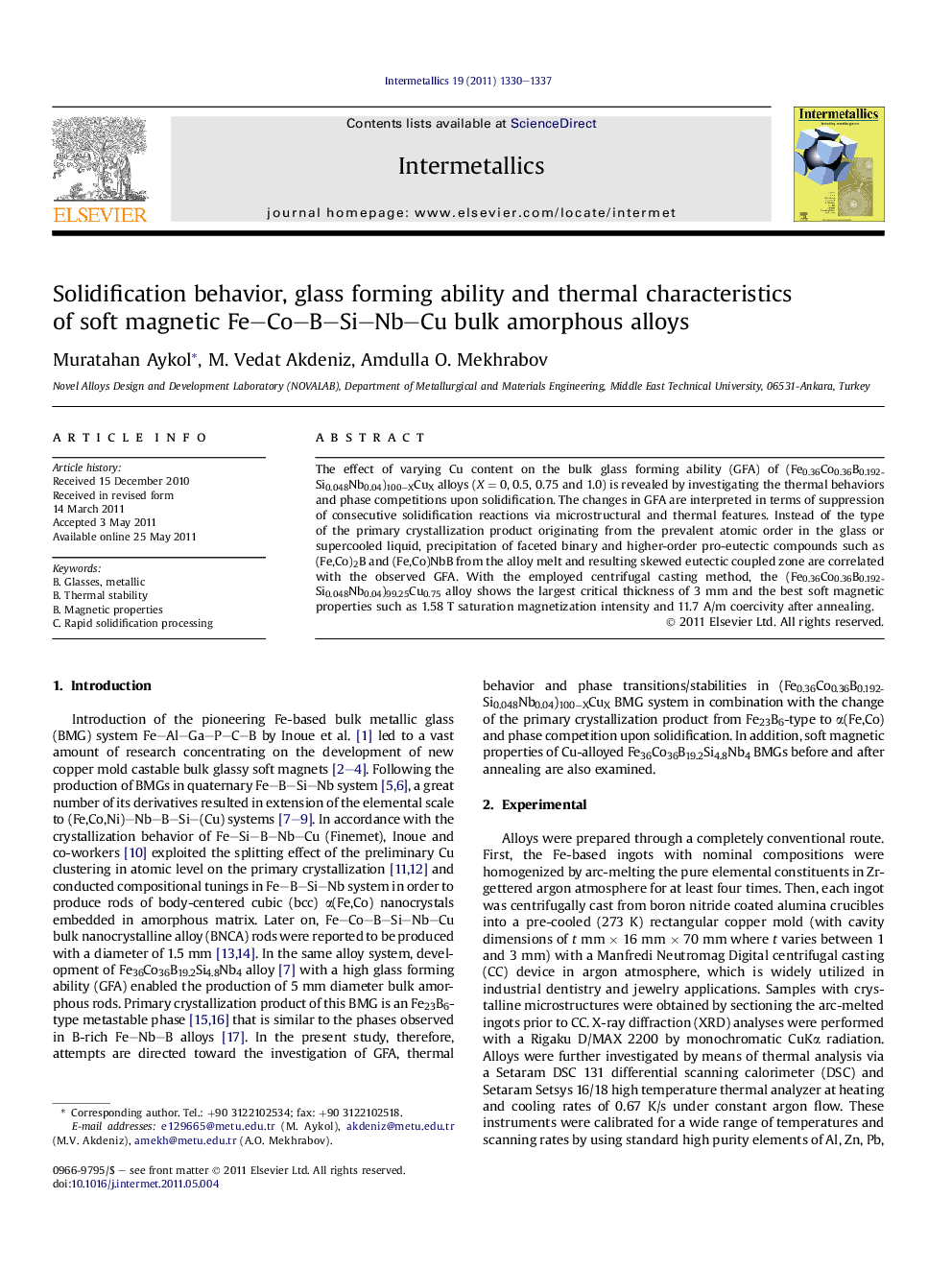| Article ID | Journal | Published Year | Pages | File Type |
|---|---|---|---|---|
| 1600645 | Intermetallics | 2011 | 8 Pages |
The effect of varying Cu content on the bulk glass forming ability (GFA) of (Fe0.36Co0.36B0.192Si0.048Nb0.04)100−XCuX alloys (X = 0, 0.5, 0.75 and 1.0) is revealed by investigating the thermal behaviors and phase competitions upon solidification. The changes in GFA are interpreted in terms of suppression of consecutive solidification reactions via microstructural and thermal features. Instead of the type of the primary crystallization product originating from the prevalent atomic order in the glass or supercooled liquid, precipitation of faceted binary and higher-order pro-eutectic compounds such as (Fe,Co)2B and (Fe,Co)NbB from the alloy melt and resulting skewed eutectic coupled zone are correlated with the observed GFA. With the employed centrifugal casting method, the (Fe0.36Co0.36B0.192Si0.048Nb0.04)99.25Cu0.75 alloy shows the largest critical thickness of 3 mm and the best soft magnetic properties such as 1.58 T saturation magnetization intensity and 11.7 A/m coercivity after annealing.
Graphical abstractFigure optionsDownload full-size imageDownload as PowerPoint slideHighlights► Cu alters primary crystallization product to bcc-FeCo. ► Cu alloying does not alter solidification products and their sequence. ► Stability of faceted (Fe,Co)2B and (Fe,Co)NbB phases promotes glass formation. ► Optimum Cu content is 0.75 pct.
